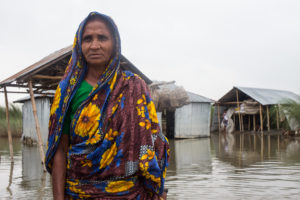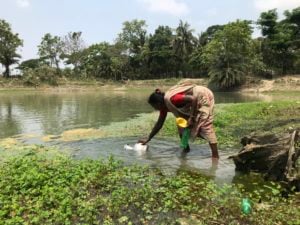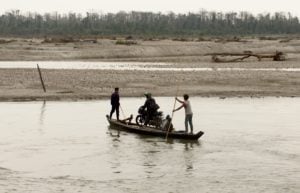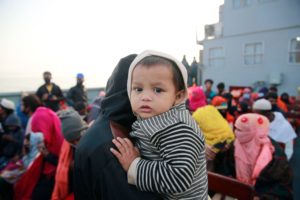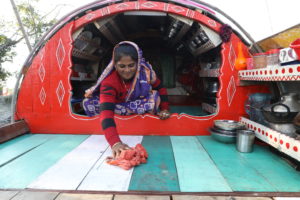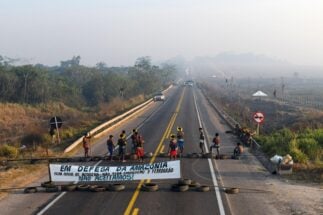When disasters strike, local authorities focus on material damages and how to alleviate them. Little to no attention is paid to the psychological impacts of extreme weather, which can last as long – and be as severe – as the loss of shelter and livelihoods.
In Bangladesh, seasonal floods and riverbank erosion come with disastrous impacts for riverine communities, who stand to lose crops, livestock and even homes. But while erosion occurs only during the monsoon season, and its material impacts can be predicted and managed with minimal loss of lives, its mental health consequences cannot. As a result, the psychological aspect of these recurrent tragedies remains poorly understood.
Lack of research on disasters and mental health in Bangladesh
My current role as a research assistant at the Center for Sustainable Development, part of the University of Liberal Arts Bangladesh, involved participating in a research project to study people’s access to healthcare along the Jamuna River. It also looked at how floods and erosion specifically are affecting their mental health year after year.
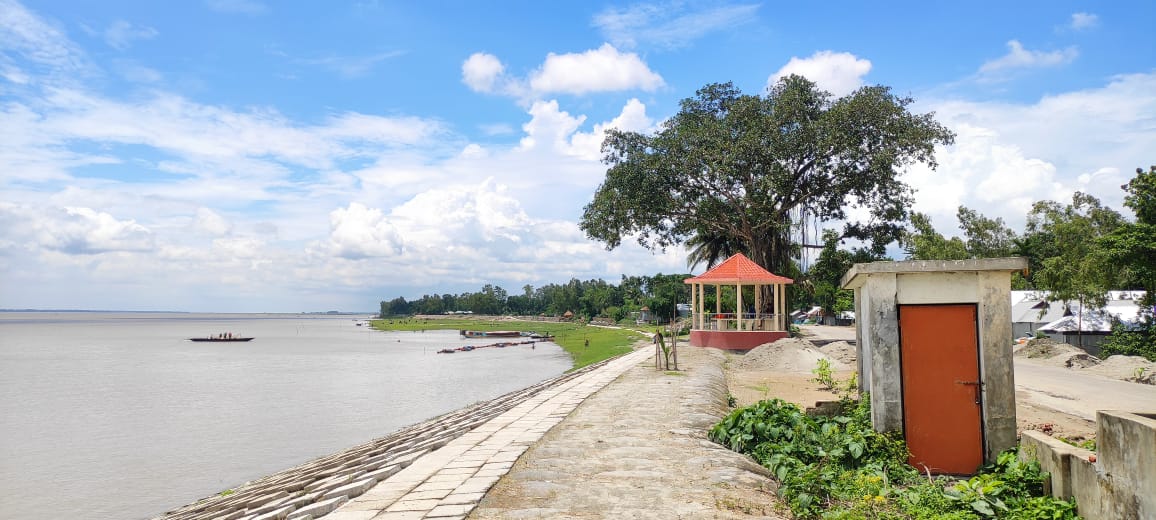
My work intends to add to early-stage research suggesting that disasters can trigger anxiety, depression and post-traumatic stress disorder in some people, with children, women and the elderly being the most vulnerable groups. A 2019 survey conducted in Bangladesh observed that people exposed to the problem of erosion, and consequent potential displacement, reported disproportionate levels of stress and anxiety that could morph into depression.
Mental health issues require special attention and policy interventions in erosion-prone areas
At present, disaster-response policies in Bangladesh do not include any mental health provision, and there is scant data that could inform them. With my research, I wanted to document how mental health issues require special attention and policy interventions in erosion-prone areas.
The ground reality
Char Pouli, Char Salimabad, Nayachar and Manikdar are small villages in Tangail, Sirajganj, Kurigram and Bogura districts respectively, along the course of the Jamuna River in Bangladesh. Between June and July 2021, I conducted 10 focus groups discussions in the villages, interviewing a total of 80 participants. None of the villages have embankments to protect them from erosion, and with every monsoon season the losses increase. All names of respondents quoted in this essay have been changed to protect their anonymity.
Most residents told me that natural disasters are exacerbating existing practical problems such as poor healthcare and education, poverty and unemployment. According to a study in the journal Global Psychiatry on mental health and riverbank erosion, the poor and people with pre-existing mental illness are most at risk of deteriorating mental health because they don’t have the necessary material resources to adapt to environmental changes.
The villagers I spoke with said that the anxiety triggered by the onset of the monsoon severely disrupts their daily lives, even before any material damage occurs. Since land and property are symbols of social status, the respondents said that in the face of increased erosion, the potential material losses are a source of particularly high anxiety, because they also carry social weight.
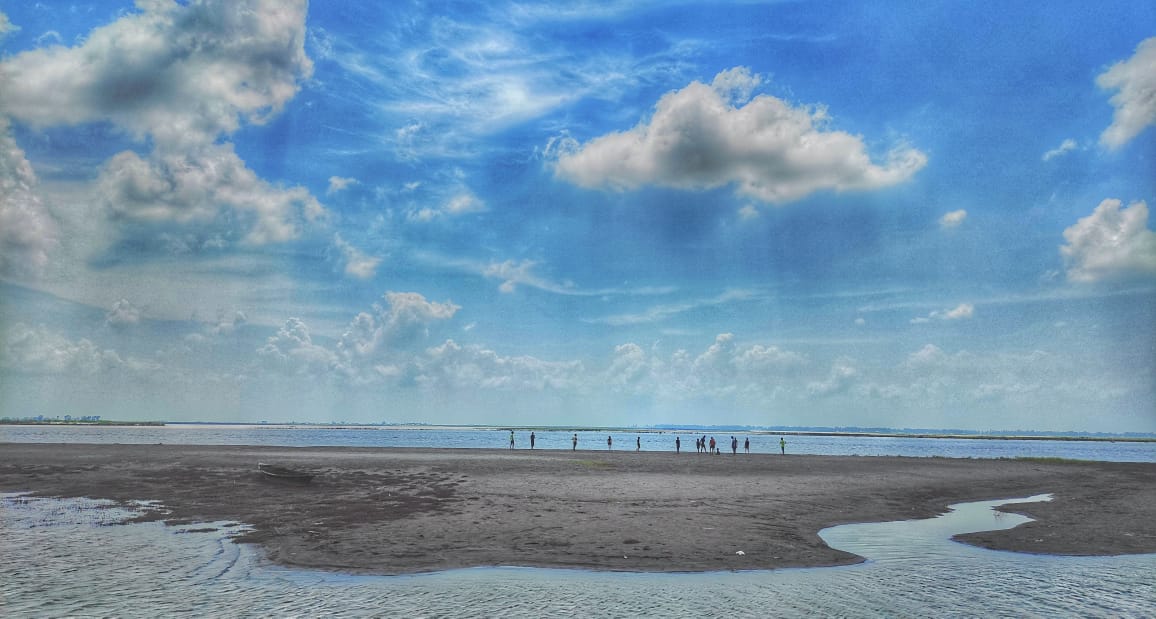
Fear of displacement
Abdul Jalil from Nayachar explained that loss of property comes with a great deal of stigma. “We fear losing our houses and lands, everything is over if you lose your shelter,” she said.
Another woman, Nusrat from Manikdar, described how people’s mood changes with the onset of the flooding season. “We become restless. We start preserving [food] and keeping things in safe places,” she said. “As soon as we are alerted about an impending flood, we start moving all our things to places that are dry and safe.” But while goods can be moved, people often have no choice but to remain in their flooded homes. Nusrat added that there are rarely any disaster shelters in villages. Those that do exist are too small to accommodate many people.
When people have to move, they lose their sense of identity along with their material assets
In the face of severe flooding, people fear they may be permanently displaced, losing their ties with friends and family. Many respondents said that when they have to move, they lose their sense of identity along with their material assets. Apon, a young man from Char Pouli, recalled the discrimination he faced when migrating temporarily to the capital Dhaka: “[At home] we know everyone, we can at least share our feelings when we are sad. In Dhaka nobody knows us, we have to live in slums. People in slums don’t want us to stay there. They call us in abusive language, they say we are stealing their work”.
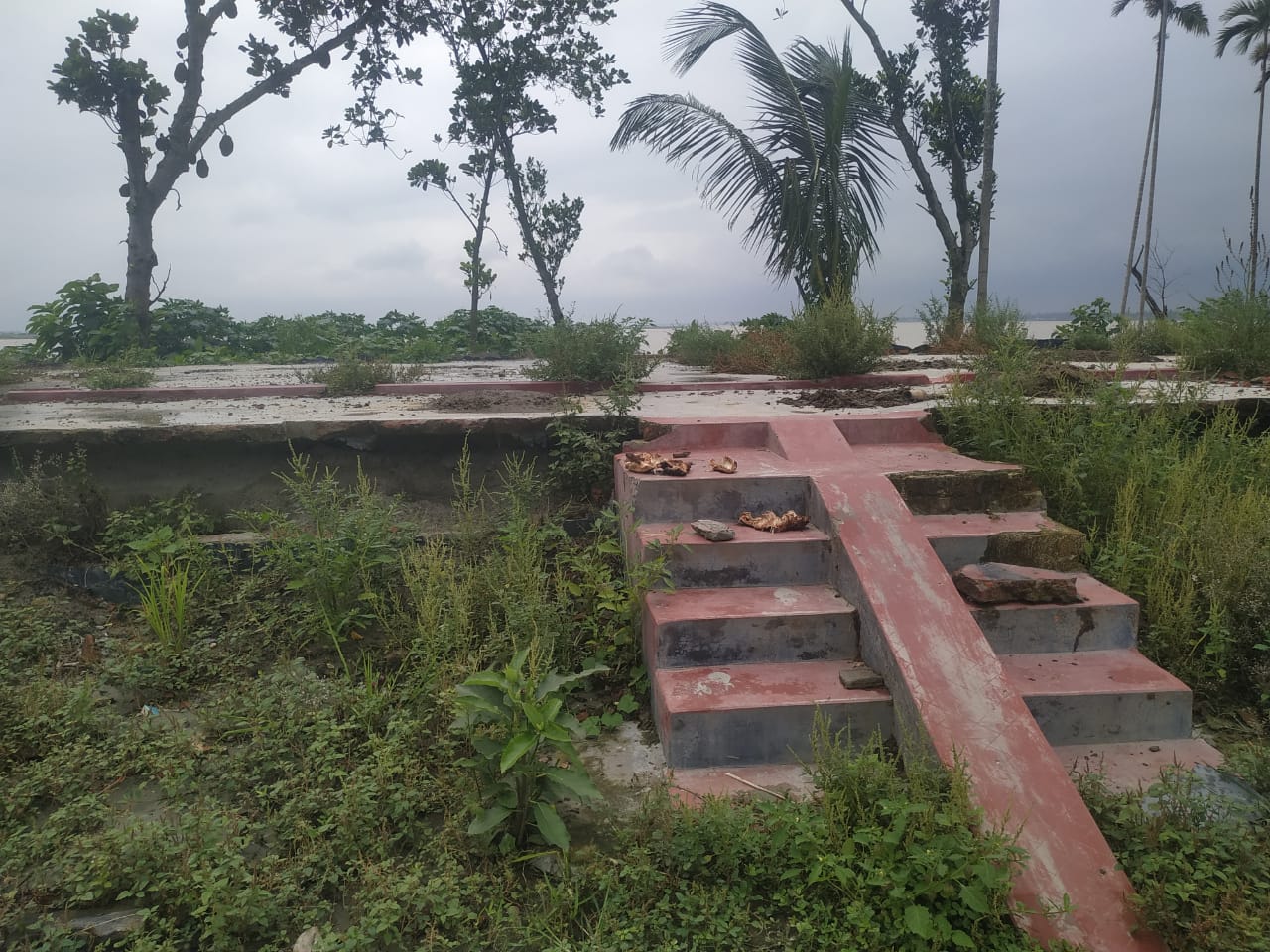
The impact on women
Riverine communities suffer long after a disaster occurs. Many women my female colleague spoke with said that they could not get over the anxiety caused by reliving the disaster. This is because women are more involved in running the household; taking care of children, rearing cattle and more. Their hands-on routine means they experience disruption more acutely.
Sometimes, one respondent said, women reduce their food consumption to accommodate the needs of other family members. A study from West Bengal, in India, also found that women are more vulnerable than men to mental health impacts in the face of erosion, including phobias and persisting state of shock.
It is heartbreaking to see your house being taken away, we cannot forget it. This haunts us like a bad dream.Maisha, resident of Nayachar village
Amena, an elderly woman from Nayachar, described how stress increases during the flooding season: “We have to stay under water, and our feet are regularly wounded since we have to work the whole day in the water. We have to rear the children. We have to cook. At night we cry for the pain of the wounds.”
Maisha, from the same village, described how these stressful events affect mental health, saying that people experience flashbacks long after the floods and erosion are over. “It is heartbreaking to see your house being taken away, we cannot forget it. This haunts us like a bad dream,” she said.
Long-lasting mental health impacts
Experiencing floods and erosion year after year pushes whole communities into depression. People reported feeling helpless, suffering from disturbed sleep and becoming pessimistic. One respondent described persistent “seizures” suffered by his mother after repeated erosion.
While many people eventually overcome the stress, a small number suffer for longer periods. This can be due to poverty, lack of government support or simply the recurrence of erosion-related incidents in the area where they live. Seven out of 40 people stated that they suffered from mental health issues for longer periods. Of these, most had been affected by flooding around six times.
Bashar from the Manikdar village became emotional as he described how erosion has changed his life: “I have suffered a loss of minimum 10 lacs taka [about USD 11,700]. It takes 2 lacs taka [about USD 2,300] to build a new house. I am stricken with debt now, but I was not poor before.” On the verge of tears, he said that just three years ago his family had enough money, but “after I hurt my leg [while moving possessions during erosion] I am now a burden, all my happiness is taken away. I will die like this.”
Robiul, an elderly man from Manikdar who has lost his home four times due to erosion, broke down, cursing his fate. He said that his preoccupation with saving his home from the next disaster interferes with other more immediate domestic decisions.
Even though lack of services is a big problem for these communities, the focus group attendees consistently said that having access to healthcare matters less than safety from erosion and flooding.
Policy response
Local authorities mitigate loss and damage through disaster risk reduction (DRR) programmes in times of emergency. However, health problems can arise any time after a natural disaster and may require urgent treatment.
The young man from Char Pouli whose mother started experiencing seizures after huge losses due to erosion said that the family was scared she would die because she didn’t have the right medical assistance. He said: “Two years ago, after losing 10 bighas [1.3 hectares] of land she started having seizures, and suffered from them for five months. One day she fell sick by the pond and we thought she would fall in and die.” This would not have been a rare tragedy, he added. Critical patients have died on their way to hospitals before: “This is a remote area, it is very difficult to take patients to city hospitals in emergency conditions.”
The residents I spoke with acknowledged the need for better healthcare, both in the field of primary care and mental health in Bangladesh. To my surprise, despite living in such high-vulnerability areas, they also reported that disaster-reduction actions remain nearly absent, failing to address needs such as healthcare as well as food and drinking water.
The few initiatives that are carried out are deeply inadequate, the communities complained, due to a lack of understanding of their specific needs. Because research on the ground is so scarce, they say, their voices don’t reach the advocacy or policy level, which in turn means the community doesn’t receive adequate support. This does not only affect healthcare provision, but even the construction of embankments along the riverbank, which constitute the first line of defence against flooding.
Better and more granular field research is a priority if Bangladesh hopes to address the practical and psychological needs of its riverine communities. Locals should also be actively involved in shaping policies and intervention programmes to facilitate their adoption, particularly in sensitive fields such as mental health.
Until this is done, the stories of these communities will remain a grim reminder that development policies devised through a top-down approach are set to fail.
